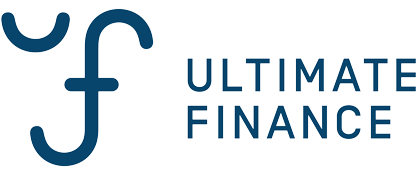
At a glance
Asset finance is very often associated with the purchase of equipment (or things of a similar high cost) for a business. This type of finance is used by organisations who have the need or the opportunity to grow their business but perhaps may not have the funds readily to hand or prefer to spread the cost over a longer term.
In other cases, a business can use assets they own – such as plant, machinery or vehicles – as security against a loan from an asset finance provider.
Where a business requires the purchase of a new physical asset the finance company will pay for the equipment, plant, vehicle or machinery and the client will pay a regular sum to the provider.
The item may eventually become the property of the business over time, depending on the sort of asset finance involved.
An asset is an object or resource that has a value and can be converted into cash. Assets can be owned by a company, government or individual and can help these organisations to deliver their purpose or generate an income.
There are several main types of asset finance and a few minor variations. Each has its uses, benefits and disadvantages but all broadly follow the principles of asset finance given above. A general overview of what’s available follows; the scheme(s) offered by your finance provider may not necessarily match all the features shown below, so it’s important to check exactly the terms you are being offered.
This is a very similar model to hire purchase for individuals. The hire purchase provider retains ownership of the asset to be leased over the term of the agreement and leases it to the business for agreed regular fixed payments. Businesses may make a larger initial payment followed by smaller payments on an agreed schedule. At the end of the agreed period, the business can choose to buy ownership of the item outright with a further payment.
This differs from some other asset finance in that the business is only ever renting the assets concerned. Again, payment is made with regular payments to an agreed schedule. This normally lasts until the finance provider has recouped the purchase value of the asset. In some instances, the finance company may allow the business to share in a percentage of the sale value of an item once it has been sold. The business does not have the option to purchase the asset outright.
Tax-wise, it may be possible for a business to offset the rental payments against their profits. However, this is not possible with long funding leases. The finance company retains the right to any capital allowances, but the business can reclaim VAT.
Equipment leasing is very similar to finance leasing, in that the provider buys the equipment required and the provider then rents this for a regular fixed fee over an agreed period. Once that period ends, the business can choose to extend the lease, upgrade the item, buy it at an agreed sum or simply return it to the provider.
Unlike hire purchase, maintenance and servicing costs for equipment leasing are down to the provider, meaning that the business doesn’t need to worry about this element. As an operating cost, equipment leasing can be offset against gross profit as usual.
Operating leasing is very similar to equipment leasing but tends to be used for specialist equipment or machinery that the business may not want to use for the full duration of the useful life of the asset or has no interest in buying permanently.
Operating leasing is basically renting an item over a short or medium term, with rental costs based on the length of time the asset is required. This type of financing is often cheaper than equipment leasing as the business only pays for the calculated value of the item over the limited lease time agreed.
There are basically two forms of asset refinancing: the first is simply using a company’s assets (physical or otherwise) as security against a loan.
The second – more properly called asset-based lending – is where a business sells an asset to asset finance provider for an agreed lump sum. The business then leases back the asset sold from the finance provider – thus repaying the lump sum paid.
Asset refinancing differs from a simple secured loan in that a business can use physical assets they may only partially own as collateral, but only up to the level of equity they have in that item.
As an example, a business has an item of machinery worth £15,000 that they are buying under a hire purchase agreement. They have some £2,500 left to pay, meaning they have £12,500 worth of equity in that asset. Consequently, they can gain asset refinancing against this asset with equity valued at £12,500 (typically they might be able to borrow say 70% of that amount).
Once the refinancing has been agreed, the business makes regular repayments over an agreed period to repay the loan with interest.
This form of asset financing relates to vehicles only. A business wishing to expand its fleet will approach a contract hire provider who will source the vehicle(s) required. The business pays a regular amount over the agreed leasing period.
Maintenance and servicing costs remain the responsibility of the provider, rather than the business. For larger companies with multiple vehicles fleet management services may also be included in the base contract hire costs.
Contract hire (also sometimes referred to as vehicle asset finance) carries the benefit of relieving a business of the time and budget-consuming tasks that accompany normal vehicle ownership. The provider is responsible for finding and buying a new vehicle, as well as all maintenance and servicing costs. At the end of the leasing period, the provider also assumes responsibility for the disposal of the vehicle.
Asset financing is suitable for a wide range of businesses and organisations, including sole traders and small to medium-sized enterprises, as well as larger companies and corporations. In the past, this tended to be an avenue only used by bigger businesses, but with the minimum levels of finance available being lowered, this has now become a more widespread option for all kinds of businesses seeking asset-based finance.
However, it should be noted that some providers tend to specialise in certain company types, such as limited companies, public limited companies (PLCs) or similar.
Last updated: 23/07/2025


Links to third parties on this page are paid for by the third party. You can find out more about the individual products by visiting their site. Moneyfactscompare.co.uk will receive a small payment either if you click the links or if you use their services after you click through to their site. All information is subject is subject to change without notice. Please check all terms before making any decisions.
DisclaimerThe list of asset finance providers on this page is a selection of services available and gives you an idea of the kind of options available. You can find out more about the individual products by visiting any of the providers listed. All information is subject to change without notice. Please check all terms before making any decisions. This information is intended solely to provide guidance and is not financial advice. Moneyfactscompare.co.uk will not be liable for any loss arising from your use or reliance on this information. If you are in any doubt, Moneyfactscompare.co.uk recommends you obtain independent financial advice.
While the limits will change from provider to provider, it shouldn’t be too difficult to find asset finance for sums as small as £1,000 up to a maximum of around £10 million. However, as with any form of loan, the provider will need to be happy that the business can afford the repayments before the loan or purchase is approved.
Typically, the length of any asset finance agreement – especially that which involves the purchase of a particular piece of equipment – will be governed by the operational lifetime of the asset. Generally, this will tend to be between one to seven years, although the length may be shortened or lengthened at the discretion of the finance provider.
Generally, asset finance providers will consider a wide range of high-value items – both for purchase and leasing or borrowing against. However, these assets must meet the DIMS criteria. That is to say that the assets in question are:
In addition, there are two broad categories of assets that can be financed: hard and soft assets:
As the name implies, these are physical assets and can include high-value items like machinery, plant, equipment or vehicles. Buildings, warehouses and other premises can also be considered for asset finance.
These are things of a less durable nature, and thus may have little to no saleable value by the time the finance agreement ends. This can include things like software packages, IT equipment, furniture, electronics (including items such as CCTV, security systems, tills, etc.) and any equipment that has a limited lifespan.
Yes. Asset finance providers understand the benefits to used equipment and will only be concerned that it is, firstly, worth the value attributed to it, secondly, in good working order and lastly is likely to remain in good working order for the duration of the agreement.
Before entering into any asset finance agreement – especially leasing or a hire contract – make sure that the asset being bought will serve your needs for the whole length of the agreement. It’s not a good idea to be making payments on an item that is no longer used or wanted.
Disclaimer: This information is intended solely to provide guidance and is not financial advice. Moneyfacts will not be liable for any loss arising from your use or reliance on this information. If you are in any doubt, Moneyfacts recommends you obtain independent financial advice.